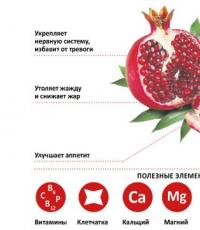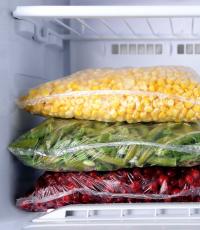The dog drinks a lot of water. The dog drinks a lot of water - an alarming symptom or the norm of animal physiology
You can read about the most aggressive dog breeds) suddenly started drinking more water than usual. Should I be worried about this? What can cause increased thirst? In today's post, we will try to answer these questions...
Increased thirst or polydipsia in a dog
In veterinary terminology, there is even a special term for increased thirst in an animal, and its use of excessive amounts of water - polydipsia. Should we be concerned about this? First of all, you need to understand that if your pet suddenly began to consume a lot of fluid, then some changes could occur in his body, which can be both within the normal range and within the pathology. You also need to make sure that your perception of increased thirst in a dog really takes place - sometimes owners can be mistaken, while their animal consumes the usual amount of liquid for him per day. Well, and, of course, it is necessary to assess what type of increased thirst your case can be attributed to.
How much water should a dog drink
We will begin by determining in what situations apparent thirst takes place. For example, you transferred your dog to dry food (find out). And, if when feeding with wet or homemade food, the dog could get water from them - there it is contained in the composition up to 80%, but the water content in dry food is only 10-15%. Accordingly, in order to make up for the lack of fluid, the dog will begin to drink more. And, this thirst of hers will be within the normal range, as it will be caused by a change in the source of water intake. That is why, on packages with dry food, the attention of dog owners is focused on ensuring that they can provide their pets with direct access to water.
Well, it is very simple to calculate the required amount of water that your dog should drink per day. The amount of water should not exceed 70-100 milliliters per 1 kilogram of animal body weight per day. Accordingly, if you have, which weighs 4 kilograms, she must drink at least 400 milliliters of water per day so that dehydration does not occur in her body. If the dog drinks more water, then we can talk about increased thirst.
A similar example can be used in relation to a dog weighing 30 kilograms, for her the norm of fluid per day will be 3 liters of water - anything more or less should alert you.
Causes of increased thirst in dogs
Natural Causes of Increased Thirst
Natural increased thirst can be observed in a dog with increased physical activity, in the hot season, at high temperatures in the room where it is kept, when some foods are included in the diet (for example, rice has a strong diuretic effect), with a high salt content in feed, in case of lack of protein in the diet...
To the natural causes of increased thirst, we would also include situations with the intake of certain medicines- diuretics, corticosteroid drugs, xylazine - a medicine used to immobilize the animal. Learn about medications that should not be given to dogs.
Also, such reasons include stressful situations, the excitement of the dog. In this case, we can talk about the phenomenon of psychological polydipsia.
Pathological causes of increased thirst in a dog
All of them are associated with the presence of possible health problems of the pet. And, it is these problems that provoke increased thirst. In order for the body to avoid dehydration, the dog drinks a lot and often. If the dog in this situation is denied access to water, or is forbidden to drink as much liquid as he needs, he may die.
Below is a list of diseases that can be symptomatic of increased thirst:
- hypercalcemia,
- hypocalcemia,
- hypernatremia,
- diseases of the hormonal system (diabetes mellitus, hyperthyroidism, acromegaly, diabetes insipidus),
- liver tumors,
- hepatitis,
- infectious diseases,
- pyometra,
- diseases of the hypothalamus
- perdical effusion,
- polycythemia,
- oncological diseases,
- acute and chronic renal failure,
- pyeloneritis,
- glomerulonephritis,
- blockage of the urethra...
Trying to diagnose yourself and determine what is wrong with your dog without the help of a veterinarian is not a very smart decision. An accurate diagnosis can only be made by a specialist, after a series of examinations, therefore, it is very important for you to seek advice from a veterinary clinic in a timely manner. There, the dog can be given additional examinations, the animal will be taken, and only after that it will be possible to talk about an accurate diagnosis and treatment.
Caring dog owners note all the changes that occur with their pets. They know how much food the animal eats at lunch and during the day, and they also notice the amount of liquid they drink. Any deviation leads to confusion. For example, why did the dog start drinking a lot of water and constantly asking to go to the toilet? Is thirst for a dog normal or should watering be limited? Excessive water consumption can be caused by many reasons, we will deal with them in more detail.
An attack of thirst in an animal can be single, for example, when the room is too hot, the dog begins to drink heavily.
This quite acceptable so the body tries to cool down somehow. But if the animal begins to drink in excess of the norm constantly, the owner must definitely look at the accompanying symptoms. Perhaps the cause is pathology.
Before deciding whether a dog drinks a lot, it is necessary to know how much he should drink. It all depends on its weight: for each kg no more than 100 ml. If the weight of the dog is 5–10 kg, then she should drink no more than 0.5–1.0 liters per day. At the same time, it is necessary to take into account not only clean water, but also all liquid meals, if the animal is on a natural diet.
A dog up to 10 kilograms drinks no more than a liter per day.
How to measure?
Before giving water to a dog, you need to measure its volume.
To determine how much a pet drinks, you need to take measurements.
Pouring water into a bowl, pre-measure its volume. When feeding, they also record how many ml of liquid meals were eaten per day. The readings are summed up and after that it is only possible to conclude whether the dog drinks a lot or is this the norm for its weight. Do not forget to measure the water when adding it during the day.
Why does a dog drink a lot of water
Most simple reasons excess fluid intake - heat indoors or outdoors, as well as a large exercise stress per animal during the warm season.
When switching to dry food, the dog will need more water.
If the animal is fed oversalted food , then it will drink much more than it should. In cases where the animal is transferred from the usual natural nutrition on dry food, the pet will need additional liquid. This is a normal phenomenon, because before the body received not only water, but also liquid from soups, broths, cereals. A does not contain moisture, so the bowl of water should be much larger than before, or you will have to add water more often than usual.
Taking medications
In some cases, when the animal is prescribed a course of diuretics, or the pet is being treated with corticosteroids, excessive water consumption may occur.
During the period of taking the drugs, the dog needs more water.
This is completely normal and should not be limited. Treatment with anticonvulsants also causes thirst in some animals.
The dog drinks a lot of water and often goes to the toilet
Thirst in a dog may be due to fever.
If the owner of the dog is convinced that the pet has no objective reasons for thirst, it is not hot outside, feeding takes place in normal mode and the animal was not subjected to heavy loads, did not take pills, you should look for the cause of thirst in internal diseases:
- Any inflammatory process in the body is accompanied by an increase in temperature. . Temperature should be taken and attention should be paid to the condition of the animal. Perhaps thirst is a consequence of the inflammatory process and elevated temperature.
- E if, in addition to thirst, the dog also often asks to go to the toilet to urinate She may have problems with her kidneys or urinary system. In this situation, it is necessary to pay attention to the behavior of the dog, whether urination is accompanied by pain, whether there is bloody discharge in the urine. It is recommended to show the dog to a specialist, because kidney problems or rather unpleasant diseases that can even lead to the death of the animal. For example, when blocking the urinary ducts with stones. If urine has ceased to stand out, the animal is lethargic, but at the same time drinks a lot - urgently to the veterinary clinic!
- Notice that the dog began to drink a lot and eat a lot, be sure to visit the veterinarian . He will offer to be tested for. Unfortunately, this disease affects everything. large quantity pets. Feeding buns, sweets and other sweets leads to the progression of the disease. The dog begins to experience excessive thirst, tries to drink a lot.
- Non-sugar form of diabetes also accompanied by water retention. The animal begins to drink excessively, the owner does not have time to add water to the drinker.
- Thirst,- explicit. This disease is accompanied by a purulent inflammatory process in the uterus. In some cases, the presence of cancer is possible.
- the animal also suffers from thirst, and the owner notices that the pet begins to drink too much water.
- Psychogenic polydipsia accompanied by an unprecedented thirst in the dog, the symptoms of which are hard to miss.
- Sometimes spinal injury leads to the fact that the dog begins to drink water without measure. Some dog breeds are prone to back and spine injuries. For example, if the dachshund has become sad, and her gait is uncertain and weak, it may have happened. An indirect symptom of injury is an excessive need for water and frequent urination. In addition to dachshunds, other dog breeds with an elongated body, such as basset hounds, have such spinal problems.
Additional reasons for thirst
If the pet had a castration operation, then the excessive need for water is a consequence of hormonal changes in the body. Bitches during lactation may also have an irrepressible desire to drink water.
During lactation, dogs begin to drink water more often.
Incorrectly composed diet leads to the desire to drink water in large quantities. For example, a low-protein diet or salty fish dishes on the menu are the reasons why dogs begin to drink water in huge doses.
Pet treatment and care
Dog food should not be salty.
How to help a dog if he drinks too much water? Here are some basic tips to help beginner dog breeders:
- Checking dog food for salt . If the foods are too salty, you should change the diet, and temporarily completely eliminate the salt.
- Increasing the amount of protein in the menu , water consumption can be reduced.
- If thirst is caused switching to dry food , just put a large bowl of water and periodically add liquid to it.
- If the owner suspects the dog pyometra you need to contact your veterinarian. He will prescribe: general and biochemical, then send the animal for an ultrasound scan. Depending on the results obtained, treatment will be prescribed. In severe cases it will surgical intervention with removal of the uterus and ovaries. Sometimes conservative treatment is prescribed. This will be antibiotic therapy, as well as the use of hormonal agents that affect the contraction of the uterus and the removal of any contents from it.
- Diabetes in animals is considered incurable , but the use of special drugs can improve the condition and prolong the life of the pet. In the form of diabetes, the pet will be recommended a diet and insulin will be prescribed. The dose will be determined by the veterinarian. It will depend on the constitutional features of the dog, his physical activity. As for nutrition, it is best to switch the animal to ready-made feed for diabetics. So it will be easier to control the process of nutrition. Feed should be chosen only high quality. If the doctor prescribes insulin, the pet will have to inject it every day at the same time. The doctor will select the dosage and tell you that it is better to inject in the withers or in the chest. Special syringes are purchased at the pharmacy. You will also need to have a portable glucometer on hand to monitor your glucose levels. Sometimes, after taking insulin, an animal experiences an excessive drop in glucose levels, which is fraught with the development of a hypoglycemic coma and can result in the death of the animal. When the level on the glucometer drops to 3 mmol / l, you should give the dog something sweet. For example, natural honey or dilute sugar in water and feed the animal with this syrup.
- With cystitis, the dog is given as much water as possible. , you can brew bearberry and let your pet drink this decoction. Antibiotic treatment is carried out in without fail. Flushing at the veterinary clinic Bladder disinfectant solutions. Suitable for this purpose: furatsilin, potassium permanganate, penicillin. In the infectious process, urosulfan, furadonin are prescribed, and when Pseudomonas aeruginosa is detected, gonocrine is prescribed. It helps to relieve spasms and soreness of cystenal. It is dripped onto sugar and allowed to be eaten by a pet.
conclusions
Any change in the animal's behavior, change in water and food intake, increase in body temperature - all this alarm signals to which the dog owner must respond.
Do not limit your dog's water intake.
Water consumption should not be limited to reduce urination and the constant calls of the animal to take a walk outside. Limiting water intake can worsen your pet's condition. Only in such cases it is possible to limit fluid intake: swelling of the paws and abdomen of the pet; that occurs even after drinking water. But in such situations, a visit to the veterinarian cannot be delayed.
Video about why a dog drinks a lot
People who have dogs sometimes notice that their pet begins to drink a lot of fluids. This is a rather alarming sign, because the more the pet drinks water, the more often he goes to the toilet, which means that the load on the excretory organs increases. From this material you will learn why this happens and how to solve a similar situation.
The rate of fluid intake for dogs
Dogs normally need to consume 50 to 100 milliliters of water per 1 kilogram of their weight. during the day. If your tailed pet drinks more than 100 milliliters per 1 kilogram of its weight, this is already a reason to think.
Then it is important to determine exactly how much liquid the animal consumes. To do this, measure the amount of water you drink over several days. If you feed your pet with natural food, you need to take into account absolutely all types of liquid: broth, yogurt, liquid porridge, kefir, and so on.
Of course, the established rate may vary slightly depending on such factors:
Why is my dog drinking more than he should?
First of all, diet affects fluid intake. If you have transferred your pet from home food on dry food, his body does not receive the right amount of water and the animal begins to become very thirsty (polydipsia). If, apart from this dog, nothing bothers you, the owner need not worry.
There are other reasons leading to polydipsia:
- the use of certain medications (diuretics, corticosteroids, anticonvulsants);
- insufficient protein content in food;
- too salty food;
- the presence of infectious pathologies in which the body temperature rises;
- food poisoning;
- diabetes insipidus;
- diabetes;
- various pathologies of the liver or kidneys;
- pyometra - is a purulent inflammation of the uterus, in addition to thirst, the bitch abruptly loses her appetite;
- hypercalcemia;
- oncological pathologies
- pregnancy and lactation period.
First of all, The amount of fluid consumed is affected by nutrition. If you transferred a pet from homemade food to dry food, his body does not receive the right amount of water and the animal begins to become very thirsty (polydipsia). If, apart from this dog, nothing bothers you, the owner need not worry.
Never restrict your pet in the water, you should identify the cause of increased thirst as soon as possible and deal with its elimination.
How to deal with increased thirst in a dog
First of all, limit or completely eliminate salty foods and salt in general from the dog's diet. In addition, increase the amount of protein products. If your dog starts drinking more fluids after you switch from a natural diet to dry food, this is quite normal. It is necessary to show it to the veterinarian just in case, and subsequently make sure that the animal always has enough clean drinking water in a bowl.
Most of the serious pathologies, especially in the initial stages, are also manifested by polydipsia. If your pet abruptly began to drink water several times more than before, it is necessary to measure its temperature. Also, thirst is increased by almost all viruses: immunity is activated and the body loses a lot of moisture.
If the dog consumes a lot of fluids and at the same time often goes to the toilet, you need to examine its excretory organs and liver, especially if the dog is already "aged".
Of course, manifestations of polydipsia may not indicate the presence of some kind of ailment, especially if thirst is observed in summer, when the animal is languishing from the heat. But in any case, if there is a described problem, you need to show the dog to the veterinarian in order to exclude serious pathologies.
It is important to always monitor the health of your tailed pet and try to make his life as healthy and comfortable as possible.
If your pet drinks too often, it's not because he is constantly thirsty. Perhaps he has some health problems. Which ones, will be discussed in this article.
Why does a dog drink often and a lot
Such a phenomenon as polydipsia, or increased thirst, is rare. It's one thing - zealous owners often overestimate this phenomenon, believing that their pet turns to water too often. It is considered normal if the dog weighs 3 kilograms and drinks 200-300 grams of water per day, that is, 70-100 grams per kilogram of body. If, with such a weight, he drinks 400-500 grams of water, then you can worry - he has clearly increased thirst.
What are the causes of increased thirst in a dog? There are several. This:
- transferring a pet from liquid to dry food. The water content in dry food is only 10-15%. It is clear that with such a coefficient, the dog will want to drink after each meal.
- a change in the conditions of existence: an animal, for example, from the forest-steppe zone, for some reason ended up in a sultry desert - naturally, he will immediately want to drink;
- pregnancy;
- hot season;
- stuffy room, lack of ventilation;
- consumption of certain foods. For example, rice has a strong diuretic effect, thus, using it, the dog goes to the toilet more often and, accordingly, drinks more often;
- large amounts of salt in food. It is known that after eating salted foods, natural thirst begins;
- lack of protein in the pet's diet;
- reaction to medications, chemotherapy, etc.
It is considered normal if a dog weighs 3 kilograms and drinks 200-300 grams of water per day, that is, 70-100 grams per kilogram of body. If, with such a weight, he drinks 400-500 grams of water, then you can worry - he has clearly increased thirst.
These are all reasons that cause increased thirst not as a pathology, but as a natural reaction. If the dog has the prerequisites for the listed phenomena, then in this case you should not worry. Change the diet or ventilate the room - then the dog will drink less often.
As for polydipsia as a pathology, here you will need the help of a doctor - you need to call him at home. If there are no obvious reasons for increased thirst, then perhaps the pet is sick with something or he experienced stress, which is also characteristic of polydipsia. Only an experienced veterinarian can understand polydipsia in a dog as a pathology.
The causes of polydipsia as signs of a manifestation of a disease can be:
- accumulation of fluid or pus in a body cavity;
- dropsy;
- evaporation of liquid from the surface of the skin along with a wound or burn;
- diarrhea;
- vomit;
- discharge from the genitals;
- blood loss.
If there are no obvious reasons for increased thirst, then perhaps the pet is sick with something or he experienced stress, which is also characteristic of polydipsia. Only an experienced veterinarian can understand polydipsia in a dog as a pathology.
Diseases associated with increased thirst
There are a number of diseases, one of the symptoms of which is increased thirst. These include:
- Diabetes.
- Acromegaly is a disease associated with excess hormone growth.
- Hypothyroidism is a disease caused by an insufficient number of glands in the thyroid gland.
- Tumor of the liver.
- Hepatitis.
- Acute renal failure.
- Pyelonephritis is a disease of the urinary tract and bladder.
- Polycythemia - the formation of an excess number of blood cells - erythrocytes.
- insulinoma.
What to do if the dog drinks a lot of water
In order to somehow help a dog with increased thirst, you must first establish its cause: is it a natural reaction or a symptom of some disease. It may be in the banal salted food, or maybe in diabetes or hepatitis. Therefore, it is very important to observe the behavior of the pet, its condition, whether there are any accompanying symptoms, deviations from the norm, changes in behavior, and so on.
If the dog is healthy, then it is worth reconsidering her diet: does she have enough protein. It is also better to refuse dry food, because after it the dog always wants to drink.
If, in addition to increased thirst, the dog has some other manifestations, such as diarrhea, vomiting, a passive state, then you need to sound the alarm - call the veterinarian at home.
When seeking help from a veterinarian who will prescribe the appropriate treatment for the dog, try to provide the pet with the necessary care and care. Always leave him a bowl of clean water. Clearly follow the course of treatment and follow all the recommendations of the veterinarian.
What are the reasons for frequent bouts of thirst in a dog and frequent urination
Many owners have to deal with the problem when the dog drinks a lot and urinates a lot, which can be due to both a natural reflex and the development of dangerous diseases.
To distinguish one from the other, you can observe the behavior of the pet and recognize the disease by characteristic signs, or simply protective function organism to some irritant. The following information will help to understand this issue, which gives a detailed idea of \u200b\u200bthe unusual behavior of the dog.
Excessive dog pissing as a normal reflex
It is a mistake to think that the dog began to write a lot due to the development of some kind of disease. A dog, like any other pet, tries to assert itself. Whether the dog is old or young, excessive pissing can be a sign of expressing an emotional state in certain situations:
- As a result of stress;
- When frightened by someone or something;
- Fear of other pets living in the apartment;
- With pain syndrome;
- As self-affirmation or proof of something, in case of disagreement with the actions of others;
- The manifestation of sexual characteristics during estrus or pregnancy;
- Age features
All these reasons are self-removable and should not cause concern to the owners, it is only necessary to slightly correct attitudes and actions, and in case of marking the territory, sterilize or castrate the pet.
However, if a dog drinks a lot of water and urinates incessantly, such behavior can serve as a signal for the development of dangerous diseases, the symptoms of which can be very different depending on the severity and type of the disease.
Situations when a dog drinks and pees a lot, as a result of diseases
A caring owner will definitely notice the pet's unusual behavior when the dog drinks a lot of water and urinates, which can be a cause for concern and the beginning of the development of many diseases. Veterinarians have identified several that are most often found in dogs when contacting the clinic:
- Cystitis is an inflammation of the bladder, which is accompanied by sharp pains with frequent urination. A general urine test will help determine the disease, after which the doctor will prescribe an individually selected list of drugs that will need to be drunk at a strictly defined time. With timely treatment, recovery occurs after a course of antibiotics. Compliance with the rules of pet care will help to avoid relapse, and it is especially important to avoid hypothermia;
- Polydipsia - increased thirst, the daily requirement of which can exceed the norm several times. Usually this condition is characteristic of pyometra in a dog, but in some cases it is the main sign of a predisposition to more serious diseases - diabetes, renal failure, inflammatory processes in genitourinary system. If you suspect an ailment, you should contact a certified specialist who, after conducting tests and ultrasound, will make an accurate diagnosis and prescribe a treatment appropriate to the history;
- Injuries - in veterinary practice many cases have been noted when the dog began to drink a lot of water and write due to damage to the spine. Injury spinal column most often found in breeds with a long body - dachshunds, basset hound, in which nerve endings are crushed, as a result of which the pet may experience a weak gait, despondency, apathy. Birth trauma also causes irreparable damage to the body and can lead to frequent urination. The most accurate picture of the disease can only be established by an experienced veterinarian who will examine the pet, take tests and prescribe the necessary procedures for a full recovery;
- Ectopia of the ureters is a type of severe congenital disease that spares neither adult dogs nor puppies. Characteristic signs can be observed already in puppyhood according to the symptoms, which can be determined by a qualified specialist. Often, after urography, surgery and postoperative therapy are required until complete recovery.
In addition to the above diseases, a sign of which may be the behavior of a pet, when the dog drinks a lot of water and urinates, the reason is often associated with the castration of the animal and the failure of the hormonal background. The veterinarian prescribes the required dosage of a course of corticosteroids, after which complete recovery occurs.
One more important point, which should not be ignored - urinary incontinence in puppyhood. If after explaining to the puppy his place of the toilet continues involuntary urination, then you should consult a doctor - this is a clear sign of a developmental pathology that can only be eliminated by surgery.
In any case, with the manifestation of unusual behavior of a family pet, when the dog began to drink a lot of water, the reasons and an accurate diagnosis can only be established by a certified veterinarian, whose help is simply needed here.





